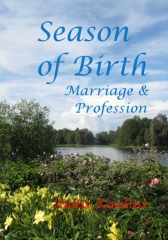Although the Supreme Court may decide the case narrowly with respect to the particular facts of the Bilski business method patent case, the reasons which the Supreme Court sets out as the basis for its decision will nevertheless have broad application in law, for the Supreme Court can not duck the pressing legal patent issues and must provide a flexible standard NOW, inserting stability into a system currently ruled by chaos.
Joe Mullin at The American Lawyer in Supreme Skepticism Over Bilski Claims Puts Method Patents on Shaky Ground writes in this regard that:
"For the first time in almost 30 years, the U.S. Supreme Court on Monday considered the issue of what types of technology should be eligible for patent protection when it heard oral arguments in Bilski v. Kappos.We have posted about the landmark Bilski case from the very beginning and our line of reasoning - prior to the court decisions - anticipated what the courts decided:
Across the board, the justices indicated a deep skepticism toward the invention described in the patent application at issue, which was rejected by the U.S. Patent and Trademark Office and describes a method for trading commodities. Some of the justices went even further--expressing both a fair amount of disdain for the idea of granting broad "method" patents and a concern that ruling in favor of the petitioners would lead to patent grants on fundamental ways of conducting business or organizing human behavior. "
In re Kubin : Hitting the NAIL on the Head : Sequencing Poor Federal Circuit Court Decisions out of the Biotechnology Patent Genome via KSR and/or Bilski Reasoning
In re Bilski : Patentable Subject Matter : Federal Circuit Overturns Pure Business Method Patents : Requires Machine Process / Physical Transformation
Federal Circuit to Review Business Method Patents for Future Viability : There is a Great Likelihood of a New Upcoming Legal Standard
The Patentability of Business Methods and the Upcoming Federal Circuit Hearing en banc in Ex parte Bilski
For our part, we hope that the standard adopted is the transformative one. Transformation is the operative element that is common not only to patents but also to copyright law, for it is "transformation" which is the inventive step.
A copyrighted work is after all - in most cases - simply a unique transformation of commonly used words of the language or languages written. Since nearly every word is in a sense "copied" from prior art, and since many elements of any written work are common to many works due to the linguistically identifiable rules of grammar and syntax, almost any truly transformative work still necessarily contains many copied "elements". It is therefore the transformative nature of a work as a whole which must be judged and not its individual parts per se.
As far as patents are concerned, the same reasoning applies. Any transformation of "matter" or of a more abstract element of technology such as software or medical knowledge necessarily "copies", i.e. it relies on many elements of prior art to reach a new discovery. An inventive step is never taken in a vacuum and can therefore as good as never be divorced from the environment in which it takes place.
An invention is the whole work and it is entirely conceivable to imagine a fantastic new written work or invention made up totally of otherwise copyrighted or patented parts - for which the copyright or patent holders of those parts should in the case of such an invention nevertheless get nothing, because a transformation has taken place in the new whole.
A transformative standard can also be equally applied to software products (as a whole) or to new medical advances (as products), i.e. the transformative software (as a product) should be patentable, but NOT elements of the software code, and similarly, transformative medical discoveries should be patentable, but NOT the methods used to achieve them, e.g. transformative new ways to synthesize a gene should be patentable, but not the gene itself.
In the case of business methods, a transformative software product implementing a particular business method should be patentable - but NOT the business method itself. Until a business method is APPLIED, no transformation has occurred. Therefore, only a product which performs such a transformation can be patented.
We see no serious problems with a transformative standard - which need not be tied to machines or any other technology. The inventive step should be universally recognizable as a reproducible transformation.
The view voiced by some commentators and also expressed by some judges and also U.S. Supreme Court Justices that the Bilski patent might be rejected as being merely "an abstract idea" is an intellectual cop-out and begs the question of drawing the necessary line between "an abstract idea" and "an inventive step". WHERE that line is to be drawn is the job of the U.S. Supreme Court to determine and the Supremes therefore can not avoid the establishment of a standard simply by rejecting Bilski's business method as "an abstract idea".
The question is, when does a non-obvious abstract idea become an invention? And that question, the Court must answer. They have little choice.
We suggest that the only viable answer is the transformative standard.

No comments:
Post a Comment